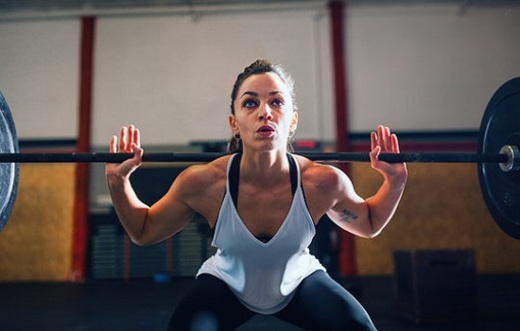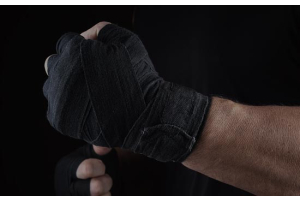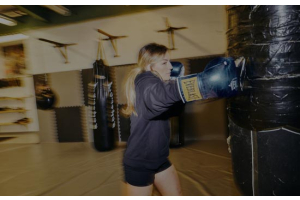Top 6 Tips For Getting Most Out Of Your Squats

Leg day is the most important day at the gym, that your trainers constantly focus on. Many individuals underestimate the importance of leg day. They assume it to be a tiring day full of difficult and heavy exercises, that results in exhaustion. Especially the ones who are in the training for strength and conditioning loves to skip leg day. Leg day carries immense importance for your physical fitness and if you are serious about your fitness goals then you would never skip a leg day. The development of lower limb fitness for stronger and more durable legs enhances your athleticism and flexibility. For this purpose, the best simple and effective workout are squats. Squats are easy to learn and to get accurate after a number of repetitions. The challenging thing about squats is to push yourself enough to reach your limit. It is important to know the benefit of learning how to squat perfectly. Your body and position must be flawless to obtain the maximum gain from your squats training.
Check out our Fitness Equipment!
Benefits Of SquatsSquats variations focus on very functional movements that represent a particular movement pattern that strengths leg muscles. The squat is a signature workout for balance and endurance. The squat’s compound moves affect your whole lower torso and help in developing stretched muscles and overall strength. Here are some important step-by-step guidelines to improve your squats to get maximum benefits of doing squats and have a better training experience.
1. Acquiring The Proper Squat Position
The primary step to flawless squat technique is to adopt the right stance or position. Your feet should be parallel to the width of your shoulders. Your legs might turn outwards a bit instead of pointing straight, it depends upon the flexibility and comfort level of your leg muscles.
2. Firm Placement Of Feet On The Ground
Make sure that your heels stay planted to the ground throughout the duration of the squat. Keeping your feet grounded provides you weight distribution and force of the body are balanced. Feet liftoff shows a lack of movement in ankles or an absence of flexibility in the calves. Rising your heels causes your body weight forward that can put you in an imbalance stance, derailing your force. You may lose your balance and may fall. Keeping the heels tightly gripped to the ground maximizes leg muscular strength, engages the muscles, enhances alignment, and adds stability. Screwing your feet firmly to the floor increase the chances of your knees flattening inward when you are in the squat position. So, avoid lifting your feet or heel off the ground.
3. Sustain Distributed Center Of Gravity
A very obvious mistake to avoid in squats is to preventing your knees from going far too forward when your legs incline. This is usually associated with feet liftoff. The best way to avoid it is to maintain your center of gravity, by equally dividing the body weight. During squats, your knees must be centered as much as possible. Your feet should be placed parallel to the shoulder width and toes pointed forward. If the toes are angled to outwards or inwards direction it will cause an unequal distribution of force and the knees would go forward. The forward movement of the knees is also dependent upon the anatomy of the human body; in some individuals, their knees move forwards even when they are in a perfect stance for squats. So, in such a situation try to take it at a slow pace and consistent practice to get in the right form. An exact squat workout requires you to begin with your feet placed wider than the shoulder-width apart. Adopting a narrow stance benefits you to aim your outer thigh muscles but it reduces the balancing of your core and it places additional force on your knees. In some cases, it is harder for some individuals to descend to the appropriate depth in a squat because their hip and ankle muscles are not flexible. For such individuals, the posture for proper mechanics of squats can be achieved by slightly lifting the heels off the ground which puts them in a good posture for easy mobility. There are squats shoes available that allow individuals to get the desired depth without hurting their hips and ankles.
4. Practice At Slow Pace To Perfection
Perfection requires time, to master your squats you need to practice at a slow pace, to gain efficiency and a perfect form. Especially when you are targeting weight squats. The barbell squat is a squat variant that involves carrying extra mass other than your body mass, which results in limited control over the external weight. Ensure your centered position on the weight before you lift it off the ground. Hasting your squat can cause several damages to your perfect stance, it may improperly load your force causing non-symmetrical weight distribution. This may cause you to fall to the ground, to avoid such a situation drop the weight before you fall along with it.
5. Start With Full Squats To Get In Perfect Form
A perfect full squat can be defined as a squat with your thighs parallel to the floor. You may not be able to perform full squats due to excessive weight. A squat which is flawless is more beneficial than an improper squat performed with weights. Whereas a half-squat lacks efficiency because it does not involve those muscles that participate in full squats. If it is hard for you to perform squats initially then practice standard squats to perfection, then after that progressively add weights while maintaining your proper squat position.
6. Do Not Perform An Overextended Squat
The squat that goes below 90 degrees is not perfect, it will strain your lower back and cause pressure to the lumbar region of the spinal cord. It also puts a lot of strain on your knees and quadriceps.
7. Try Squats Variants
After you have mastered the traditional or standard squat, it’s time to go for variant forms of squats. It will allow your leg muscles to develop in a diverse manner by engaging other leg muscles. You would also feel breaking the boredom of performing the same squats over and over. You can opt for single-leg squats or an even more versatile nature of squats like Muay Thai squats. Remember to keep a keen eye on your posture to maximize the benefit you get by performing diversified natures of the squat exercise.
Keynote: Squats is not an easy exercise, but is the best leg workout for lower limb-muscles strengthening and flexibility. To get the maximum benefit from your squat training, adopt a firm and perfect stance. Practice at your own pace rather than rushing into it.
Want to learn more? Sign up for our NEWSLETTER below and start receiving more Tips & Info by E-Mail.





